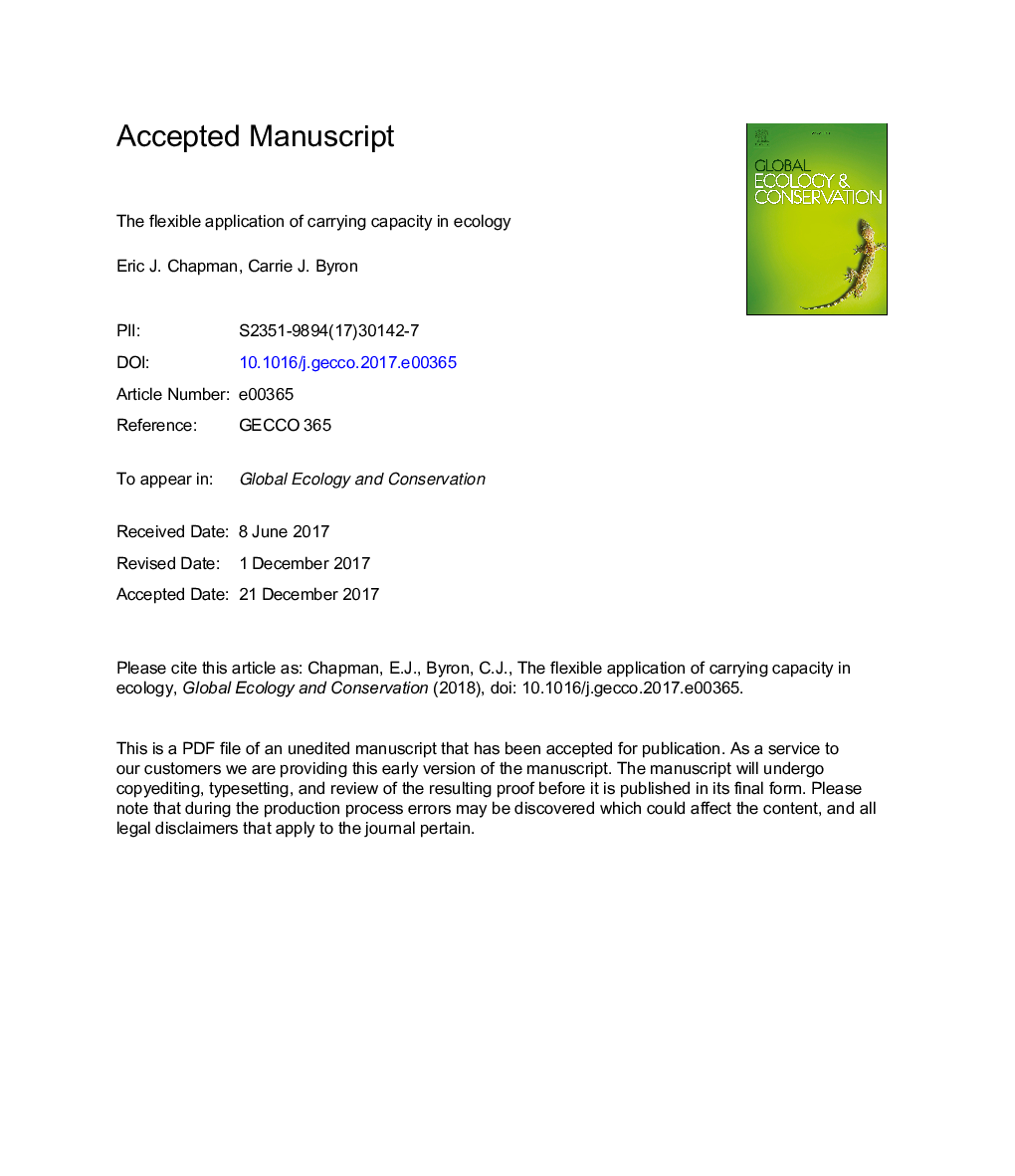| Article ID | Journal | Published Year | Pages | File Type |
|---|---|---|---|---|
| 8846237 | Global Ecology and Conservation | 2018 | 32 Pages |
Abstract
Carrying capacity encompasses a broad collection of approaches used to better understand biotic interactions in ecosystems and is often applied with no explicit regard to its historical origin. In this paper, we reviewed the primary literature to examine how carrying capacity is applied in ecology. We focused our review on ecosystem studies-studies that frame their results at the ecosystem level-published after the 1950s and highlight emerging trends of this concept. We found that while carrying capacity offers some underlying commonalities, a wide range of definitions and approaches hinders a unified framework to better understand biotic ecosystem interactions. Not surprisingly, these studies most often use K-the number of individuals that the environment “can support” in a given area-to define carrying capacity, despite considerable ambiguity and uncertainty in this approach. Furthermore, the studies that we reviewed spanned several levels of ecological organization: molecules to communities and up to landscapes. To add further complexity, it is not clear whether carrying capacity was intended as a dynamic concept subject to temporal variability as it was often applied in the reviewed studies. We found that carrying capacity is most often applied to studies in conservation biology, rangeland and wildlife management, aquaculture, and fisheries biology. We explore ecosystem level responses to implications of “carrying capacity” overshoot and discuss proposed mechanisms that govern ecosystem carrying capacity. We discuss the usefulness of the concept and end with suggestions to improve carrying capacity's general application in ecosystem studies.
Related Topics
Life Sciences
Agricultural and Biological Sciences
Ecology, Evolution, Behavior and Systematics
Authors
Eric J. Chapman, Carrie J. Byron,
